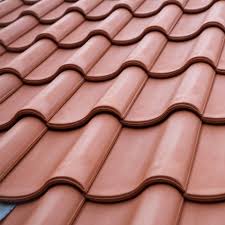Choices Of Materials For Your Home Cover

 It might seem that there are endless possibilities for making the cover of your home but a closer look will help you get the right choice easily. For instance, every material offers certain advantages as well as limitations; since weather conditions affect your home cover and sustainability of the same, your choice has to be made accordingly. The main factors that consumers need to look at is the desired look they wish to achieve along with location and climate aspects.
It might seem that there are endless possibilities for making the cover of your home but a closer look will help you get the right choice easily. For instance, every material offers certain advantages as well as limitations; since weather conditions affect your home cover and sustainability of the same, your choice has to be made accordingly. The main factors that consumers need to look at is the desired look they wish to achieve along with location and climate aspects.
Statistics findings
Look at your native real estate findings to know which materials are commonly used. For instance, in the US, residential roofs are usually made of asphalt shingles. These materials come in different color choices and have a life expectancy of about 30 years. You can look up advice from a velux skylights in Perth that can provide you choices in shingles; they have similar, dimensional shingles which are thicker as well and can help prolong life expectancy up to 40 years.When it comes to shingles, these are easily installed and are also economical options for most homeowners. The disadvantages include venting requirements and build-up of moss.
Metal roof options
The other options when it comes to making reliable slate roofing or roofs are metal. Nowadays there are roofing materials of aluminum, copper, and steel, depending on what is right for the native weather conditions. These work well for areas that tend to have wet weather conditions throughout the year. Metal helps to reflect the sun’s heat and can withstand rain, snow and high winds. It also does not have moss build-up or such problems. However, it is a material that is more costly as compared to asphalt. Also, life expectancy is high, about 50 years when you use metallic roof covers.
Other roofing materials and their properties
In certain places such as Spain where the climate is warmer concrete or clay tile roofs are found. These are found in many places and are easy to procure in warm or tropical countries. Clay remains resilient and can withstand different harsh weather conditions. Life expectancy is about 50 years of this material. Concrete or clay roofing tends to be heavy and costly however and color selection is also limited. Slate remains an expensive material for roofs; it is often found on municipal buildings and high-end residences. It has an aesthetic appearance and has other benefits such as longevity up to 100 years and resistance against insects and mold.Living roofs are a modern choice wherein a layer of substrate or soil is used to create a green roof; here plants with shallow roots can grow, providing insulation to buildings as well as helping to improve air quality in the vicinity.
